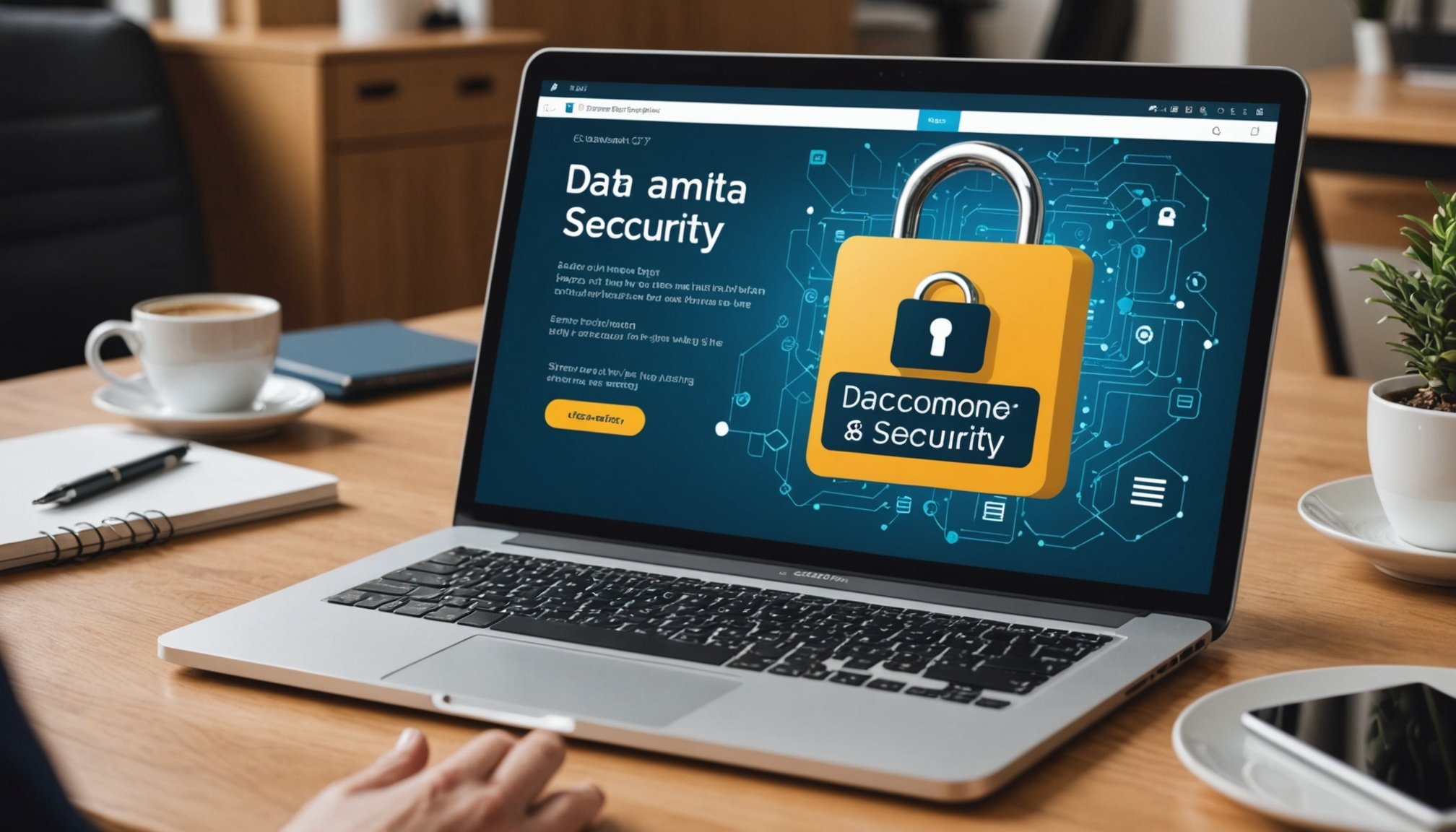Top Strategies for Boosting Data Security in UK E-commerce: A Complete Guide
In the ever-evolving landscape of e-commerce, data security is no longer a luxury but a necessity. With the rise in online transactions and the increasing sophistication of cyber threats, UK e-commerce businesses need to be proactive in protecting their customers’ data. Here’s a comprehensive guide on the top strategies to boost data security in UK e-commerce.
Understanding the Importance of Data Security
Data security is the backbone of any e-commerce business. When customers trust that their personal information is secure, they are more likely to engage with your brand and return for repeat business. As highlighted by iWeb, “Trust is the cornerstone of any customer relationship. When customers know their data is safe, they are more likely to engage with your brand”.
In the same genre : Hydrogen storage solutions: unpacking delphy's innovations
Best Practices for Ecommerce Website Security
To ensure your ecommerce website is secure, you need to follow several best practices that have become industry standards.
Create a Robust Password Policy
A strong password policy is essential for both employees and customers. This should include requirements for complex passwords with at least eight characters, a mix of upper and lowercase letters, numbers, and symbols. Regular password changes and multi-factor authentication can further enhance security.
Also to see : Essential Data Privacy Strategies for UK Healthcare Providers: Best Practices Revealed
Limit Access to Sensitive Data
Access to sensitive data should be restricted to only those who absolutely need it. This principle of least privilege reduces the risk of data breaches. Conduct regular audits to ensure that access rights are up-to-date and aligned with job roles.
Use Secure Sockets Layer (SSL) Certificates
SSL certificates establish a secure, encrypted connection between the web server and the browser. This ensures that any data transmitted remains private and cannot be intercepted or tampered with. It also verifies the identity of the website, building trust with customers.
Implement Two-Factor Authentication
Two-factor authentication (2FA) adds an extra layer of security by requiring users to provide a second form of verification, such as a code sent via SMS or a biometric scan, in addition to their password. This makes it much harder for hackers to gain unauthorized access.
Ensuring Compliance with Regulatory Standards
Compliance with regulatory standards is crucial for maintaining data security and avoiding legal repercussions.
Payment Card Industry Data Security Standard (PCI-DSS)
Any business that processes credit card transactions must comply with PCI-DSS standards. These guidelines protect credit card information from storage to checkout, ensuring that sensitive financial data is handled securely.
General Data Protection Regulation (GDPR)
For businesses operating in or serving the European Union, GDPR compliance is mandatory. This regulation protects the personal data of EU citizens and requires businesses to implement robust data protection measures.
Leveraging Advanced Security Technologies
Advanced security technologies can significantly enhance your data security posture.
Zero Trust Network Access (ZTNA)
ZTNA is a strategy that assumes no user or device is trustworthy by default. It requires continuous authentication and authorization before granting access to sensitive data. This approach is particularly effective in the fintech sector but can be applied to any e-commerce business. As noted, “Zero trust security promises that applications, devices, and subsequent users receive consistent authentication and authorization before accessing sensitive data”.
Biometric Authentication
Biometric authentication uses unique biological characteristics such as facial recognition or fingerprint scans to verify identities. This method is both convenient and secure, reducing the risk of unauthorized access.
Infrastructure as Code (IaC)
IaC is a modern approach to cloud-based security that ensures cloud configurations are secure and scalable. It helps in identifying and addressing cloud configuration complications, making it a reliable method for securing infrastructure.
Integrating Data Governance with Other Systems
Data governance does not exist in isolation; it needs to be integrated with other systems to be effective.
Integrating with ERP and PIM Systems
Integrating your data governance strategy with your Enterprise Resource Planning (ERP) and Product Information Management (PIM) systems ensures data consistency across your entire business. For example, integrating with Akeneo PIM can ensure that all product information is accurate and up-to-date, enhancing the customer experience.
Conducting Regular Security Audits and Penetration Tests
Regular security audits and penetration tests are essential for identifying vulnerabilities before they can be exploited.
Identifying Vulnerabilities
Conducting regular attack simulations helps in identifying weak points in your system. This proactive approach allows you to fix vulnerabilities before they are discovered by malicious actors. As advised, “The best way to defend against bots and hackers is to think like one. Conduct regular attack simulations and attempt to breach your own systems in real time”.
Remediation and Actionable Advice
After identifying vulnerabilities, it is crucial to remediate them promptly. A thorough review and analysis of the data collected against benchmarks help in identifying gaps. For instance, if vulnerability management is falling short of the benchmark, efforts must be taken to remediate these findings within a stipulated time.
Case Studies: Success Stories in Data Security
Real-world examples illustrate the impact of robust data security strategies.
Improved Customer Satisfaction
A leading foodservice e-commerce store saw a 20% increase in customer satisfaction after implementing a robust data governance strategy. This was achieved by ensuring all customer data was accurate and secure.
Increased Repeat Business
A builders merchants online store experienced a 15% increase in repeat business after improving their data governance practices. By ensuring customer data was handled responsibly, they built trust and encouraged repeat purchases.
Future Trends in Data Security
The landscape of data security is constantly evolving, with new technologies and trends emerging.
AI and Machine Learning
AI and machine learning are being used to automate data governance tasks, improving efficiency and accuracy. These technologies can help in continuous monitoring, encryption, and identity verification, making data security more robust.
Cyber Asset Attack Surface Management (CAASM)
CAASM automates security gap identification, helping security teams gain insights over cloud and SaaS cyber assets, fill security loopholes, and accelerate incident reaction and cleanup. This tool is particularly useful in managing expanding attack surfaces.
Practical Insights and Actionable Advice
Here are some practical tips to enhance your data security:
- Educate Employees: Properly educate employees on the risks of malware and phishing attacks to prevent internal breaches.
- Use Secure Plugins: Ensure that all third-party plugins and integrations meet your security standards and are regularly updated.
- Monitor Cloud Configurations: Regularly monitor cloud configurations to avoid misconfigurations that can lead to data breaches.
- Implement DevSecOps: Integrate security into the development lifecycle to make security a joint responsibility throughout the IT lifecycle.
Detailed Checklist for Ecommerce Data Security
Here is a detailed checklist to help you ensure your ecommerce website is secure:
- Use Complex Passwords: Require complex passwords with a mix of characters, numbers, and symbols.
- Limit Access: Restrict access to sensitive data to only those who need it.
- Use SSL Certificates: Ensure all data transmission is encrypted using SSL certificates.
- Implement 2FA: Use two-factor authentication to add an extra layer of security.
- Regularly Update Software: Keep all software up-to-date with the latest security patches.
- Conduct Penetration Tests: Regularly conduct penetration tests to identify vulnerabilities.
- Ensure Compliance: Comply with regulatory standards such as PCI-DSS and GDPR.
- Integrate Data Governance: Integrate data governance with other systems like ERP and PIM.
- Use Advanced Security Technologies: Leverage technologies like ZTNA, biometric authentication, and IaC.
Table: Comparing Key Data Security Measures
| Security Measure | Description | Benefits | Challenges |
|---|---|---|---|
| SSL Certificates | Encrypts data transmission between server and browser | Ensures data privacy, builds customer trust | Requires regular renewal, can be costly |
| Two-Factor Authentication | Requires a second form of verification | Adds an extra layer of security, reduces unauthorized access | Can be inconvenient for users, requires additional infrastructure |
| Zero Trust Network Access (ZTNA) | Assumes no user or device is trustworthy by default | Enhances security, reduces risk of data breaches | Can be complex to implement, requires continuous monitoring |
| Biometric Authentication | Uses unique biological characteristics for verification | Convenient and secure, reduces risk of unauthorized access | Can be expensive, raises privacy concerns |
| Infrastructure as Code (IaC) | Ensures cloud configurations are secure and scalable | Identifies and addresses cloud configuration complications, ensures scalability | Requires expertise in cloud management, can be time-consuming |
Quotes from Experts
- “Trust is the cornerstone of any customer relationship. When customers know their data is safe, they are more likely to engage with your brand.” – iWeb
- “Zero trust security promises that applications, devices, and subsequent users receive consistent authentication and authorization before accessing sensitive data.” – FF News
- “The best way to defend against bots and hackers is to think like one. Conduct regular attack simulations and attempt to breach your own systems in real time.” – BigCommerce
Data security is a critical aspect of any e-commerce business, and implementing the right strategies can make a significant difference. By following best practices, ensuring compliance with regulatory standards, leveraging advanced security technologies, and conducting regular security audits, you can protect your customer data and build trust. Remember, in the words of an expert, “Data governance doesn’t exist in a vacuum. It needs to be integrated with other systems to be truly effective”.
In the ever-evolving digital landscape, staying ahead of cyber threats requires continuous effort and innovation. By integrating AI, machine learning, and other advanced technologies into your data security strategy, you can ensure your business remains secure and compliant. As you navigate the complex world of ecommerce security, make sure to prioritize your customers’ privacy and personal information, because in the end, their trust is what drives your business forward.


















